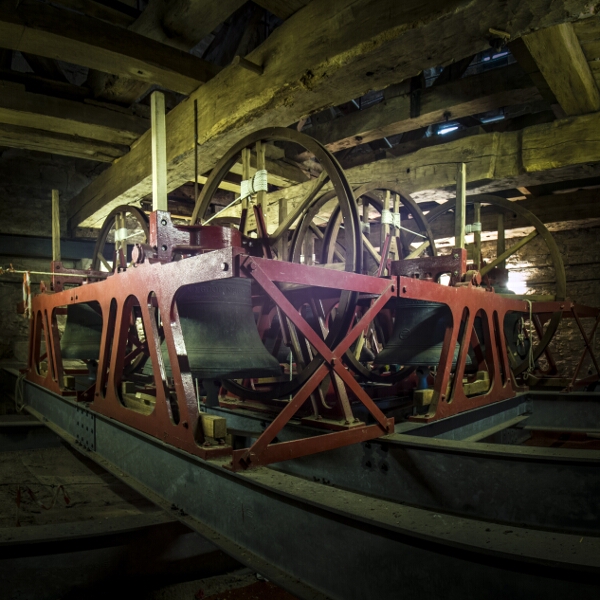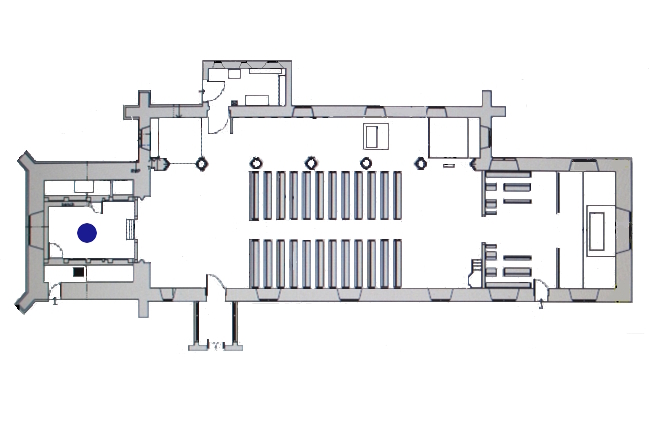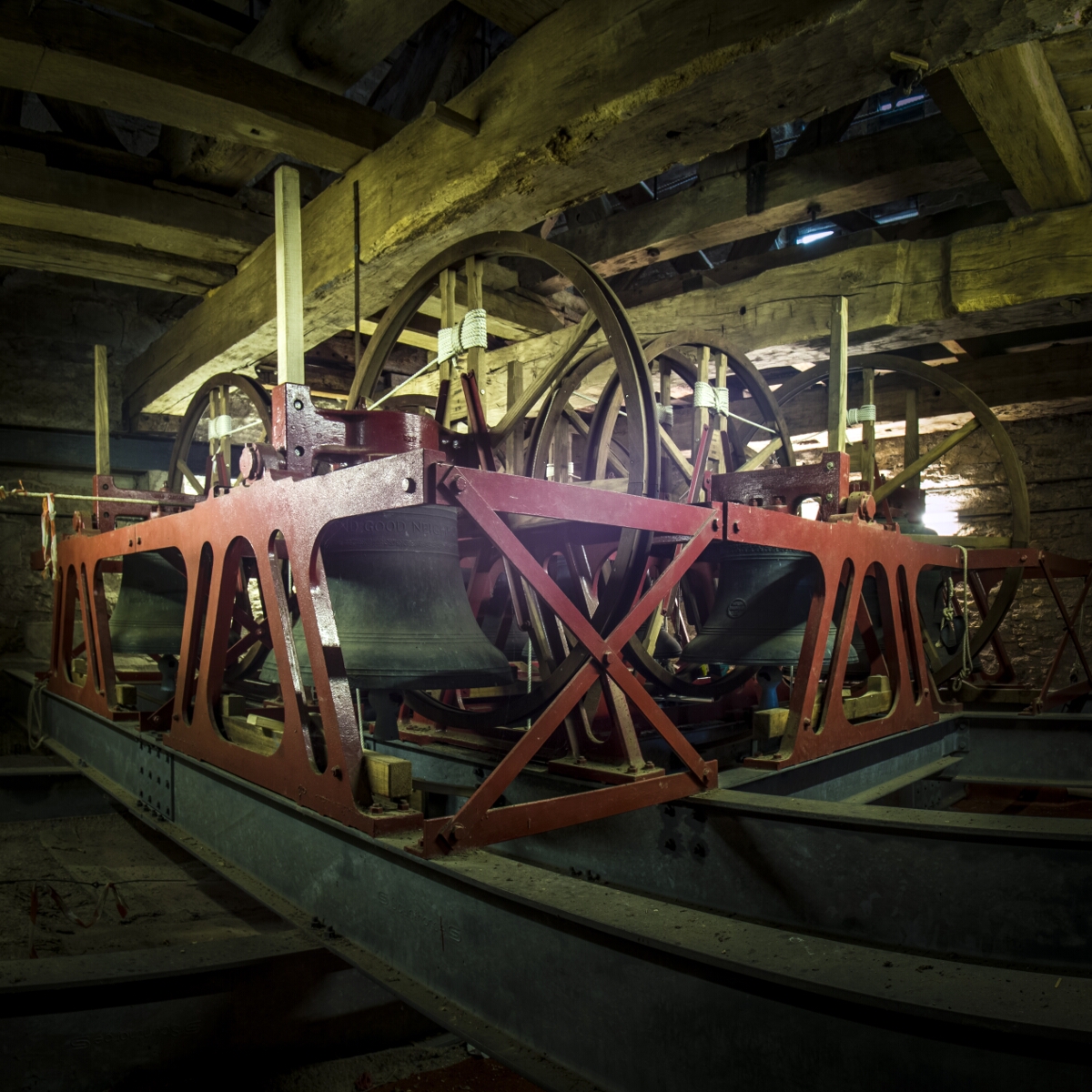In 2017, after the bells were again re-hung, a ringing simulator was purchased. This allows us to teach new ringers using a computer, by tying the clapper so that it cannot swing and strike the bell, and using a reflecting strip attached to the bell wheel to generate a signal by a sensor every time the bell swings. Hence the church neighbourhood is spared the constant clanging as we teach new ringers.
The team of local ringers practise here fortnightly, and ring each week for Sunday services and special occasions, the District ringers practise at Cradley each month during the summer, the Hereford Ringing Course takes place each spring, and visiting teams come to ring every year.
The art of bell ringing requires both physical and mental skills. The bells are connected to a wooden wheel around which the bell rope is wound. This enables the bell to swing through 360 degrees as it is being rung. This is known as full-circle ringing and requires a unique skill to control the rope as the bell swings backwards and forwards. It is stopped from going over and lifting the ringer skyward by a stay which stops the bell from swinging over the vertical balance point. However, these have been known to break! The mental skill comes into play after a ringer can control the bell so that it can be rung as and when desired.
A ringer will normally learn Rounds and Call-changes, followed by plain hunt. Rounds and Call-changes require the bells to be rung in sequence until two bells are called to change position in the sequence in which they are ringing. Plain Hunt requires the bells to change sequence on every stroke to a known pattern. As the ringer becomes more experienced, more and more complex patterns are rung, and mental skill is needed to remember patterns of 120, 240, 540, 720, 1024 and beyond!
Bell ringing is an excellent pastime to keep you fit in mind and body, so contact your local tower and start ringing!


